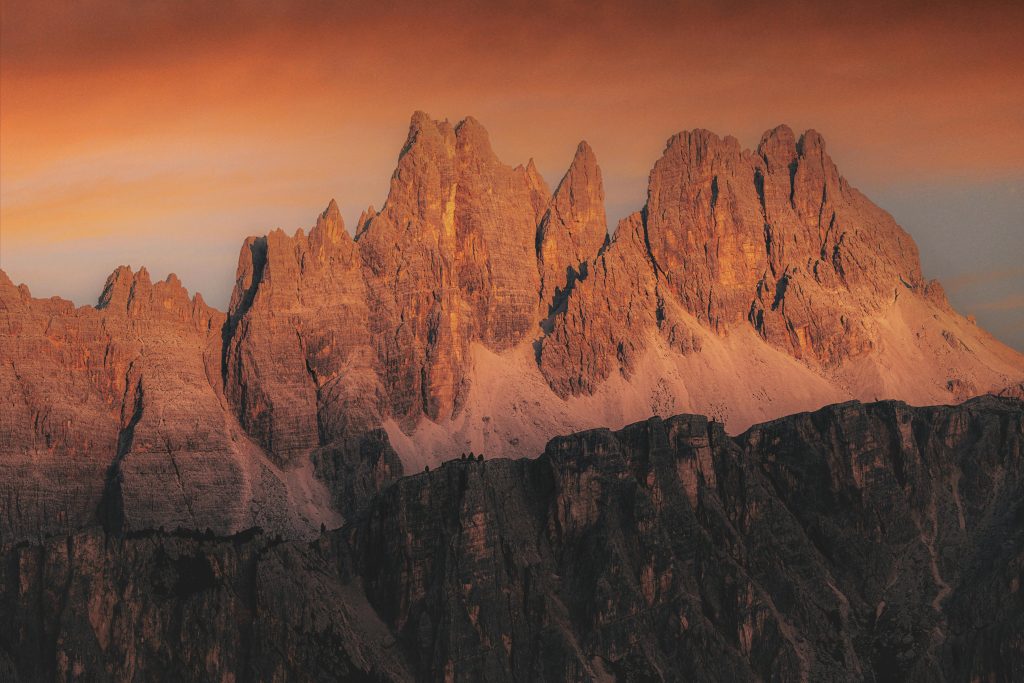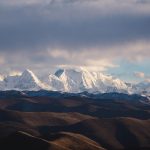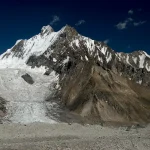Located in the Karakoram Range of Pakistan, Baintha Brakk, commonly known as The Ogre, stands at an awe-inspiring height of 7,285 meters (23,901 feet). This mountain is situated in the Gilgit-Baltistan region, renowned for its towering peaks, vast glaciers, and breathtaking landscapes. As part of the Karakoram Range, which is home to some of the world’s highest mountains, including K2, The Ogre holds a special place in mountaineering lore.
The Name and Its Significance
The name “The Ogre” is both intimidating and fitting. It resonates deeply with climbers, symbolizing the mountain’s formidable challenges and its imposing nature. The name captures the essence of the towering peak, reflecting its unforgiving terrain and the extraordinary feats required to overcome it. This mountain earned its nickname due to the sheer difficulty of its ascent. Locally, it is called Baintha Brakk, which translates to “the high flat peak.” However, climbers often refer to it as “The Ogre” to reflect the extraordinary challenges it presents. The name evokes the mountain’s imposing nature and the intense trials faced by those who dare to climb it.
Climbing History of The Mighty Ogre (Baintha Brakk)
The Ogre was first successfully climbed in 1977 by British mountaineers Doug Scott and Chris Bonington. Their historic ascent became legendary, not just for reaching the summit but for the incredible hardships they endured on the descent:
- Doug Scott broke both legs during the descent.
- Chris Bonington fractured his ribs.
- Despite these severe injuries, the two climbers managed to survive an arduous, multi-day journey back to base camp.
This remarkable tale of survival cemented The Ogre’s reputation as one of the toughest mountains to conquer.
Climatic Conditions on The Ogre
The weather on The Ogre is notoriously unpredictable and extreme. Climbers face:
- Frequent Avalanches: The steep slopes and heavy snowfall make avalanches a constant threat.
- Severe Storms: Sudden and violent storms can last for days, creating significant risks.
- Unstable Weather Patterns: Rapid weather changes demand constant vigilance and adaptability.
The ideal climbing season is from June to August, but even during this period, conditions remain challenging.

Challenges Faced by Climbers
Climbing The Ogre is a test of both physical and mental endurance. Key challenges include:
- Technical Terrain: The mountain features steep rock faces, treacherous ice formations, and mixed climbing routes that demand advanced skills.
- Remoteness: Its isolated location requires climbers to be self-sufficient, with no immediate access to help.
- Mental Resilience: The harsh conditions and extended duration of expeditions take a significant psychological toll.
These factors make The Ogre a daunting goal, even for seasoned mountaineers.
Notable Ascents and Attempts
Since the first ascent in 1977, The Ogre has seen very few successful climbs. Its technical difficulty and unpredictable weather contribute to a low success rate. Notable ascents include:
- 2001: An Italian team succeeded in summiting The Ogre, marking one of the rare successful climbs.
- 2002: A Swiss expedition established a new route, showcasing the mountain’s versatility and challenges.
Every successful ascent of The Ogre is celebrated as a monumental achievement in the mountaineering community.
Table of Contents
Tips for Aspiring Climbers
For those planning to attempt The Ogre, thorough preparation is essential:
- Technical Skills: Proficiency in both rock and ice climbing is crucial.
- Physical Conditioning: Build endurance and strength for high-altitude climbing.
- Acclimatization: Spend sufficient time acclimatizing to avoid altitude sickness.
- Weather Monitoring: Stay updated on weather forecasts to avoid being caught in storms.
- Hire an Expert Guide: If you’re not highly experienced, enlist the help of a guide familiar with the terrain.
Comparison Table: The Ogre vs. Other Karakoram Peaks
| Feature | The Ogre (Baintha Brakk) | K2 (Mount Godwin-Austen) | Broad Peak |
|---|---|---|---|
| Height | 7,285 meters | 8,611 meters | 8,051 meters |
| First Ascent Year | 1977 | 1954 | 1957 |
| Climbing Difficulty | Extremely Difficult | Very Difficult | Moderately Difficult |
| Number of Ascents | Very Few | Several | Several |
FAQs
Q: What is the best time to climb The Ogre?
A: The summer months, from June to August, are considered the best time due to relatively stable weather.
Q: How difficult is it to climb The Ogre?
A: The Ogre is one of the most challenging mountains to climb due to its technical routes and unpredictable weather.
Q: Has The Ogre been climbed in winter?
A: No, The Ogre has never been climbed in winter because of the extremely harsh conditions.
Q: Are there any easier routes to the summit?
A: While some routes are less technically demanding than others, all paths to the summit require advanced skills and experience.
External Links
- Learn more about mountaineering in Pakistan at Adventure Pakistan.
- Discover the history of The Ogre’s climbs in the American Alpine Journal.
Closing Thoughts
The Mighty Ogre (Baintha Brakk) stands as a testament to the human spirit’s resilience and determination, symbolizing the allure of extreme mountaineering and the enduring quest to conquer the world’s most formidable challenges. For climbers, it offers not just a physical challenge but a journey of self-discovery and endurance. Though its slopes remain one of the most formidable obstacles in mountaineering, The Ogre continues to inspire those who dare to dream beyond the ordinary


